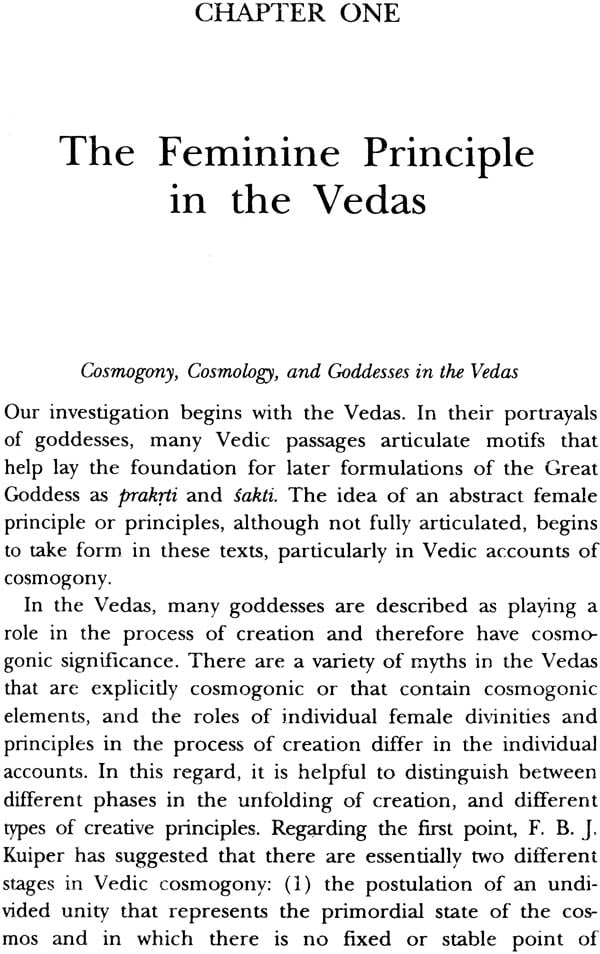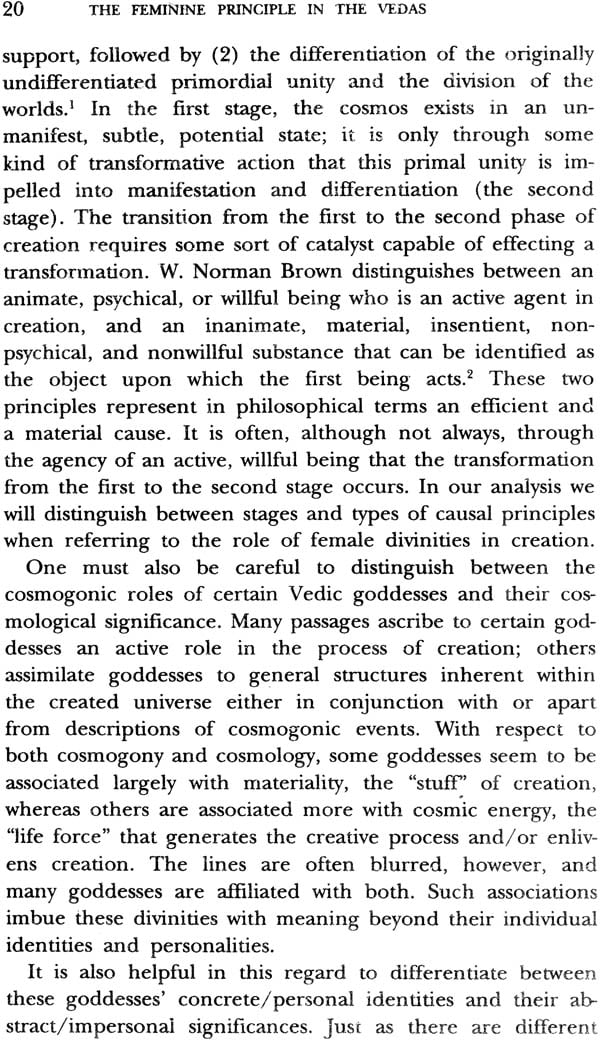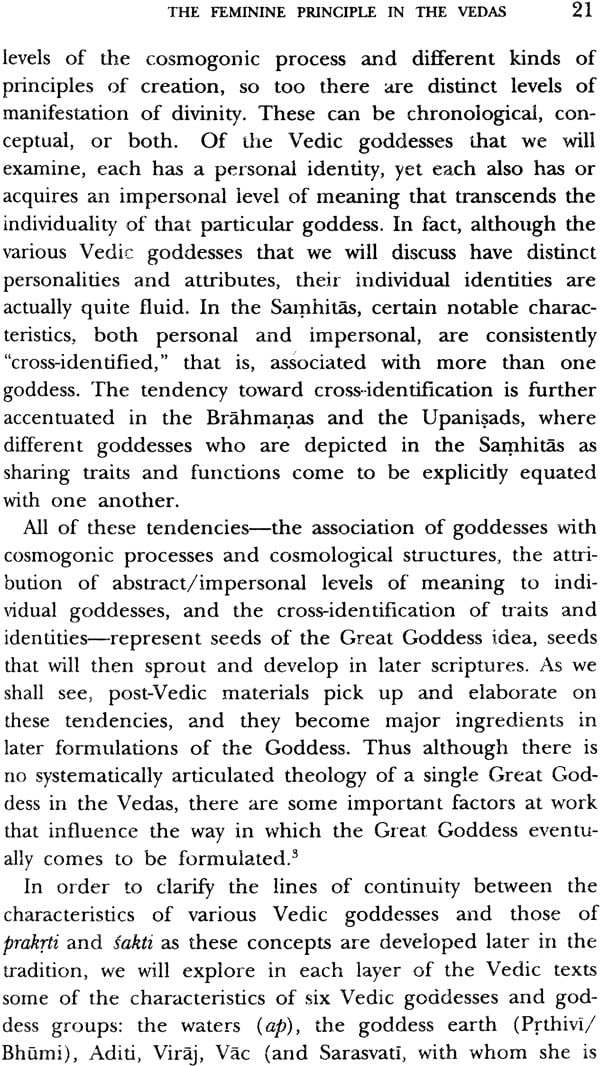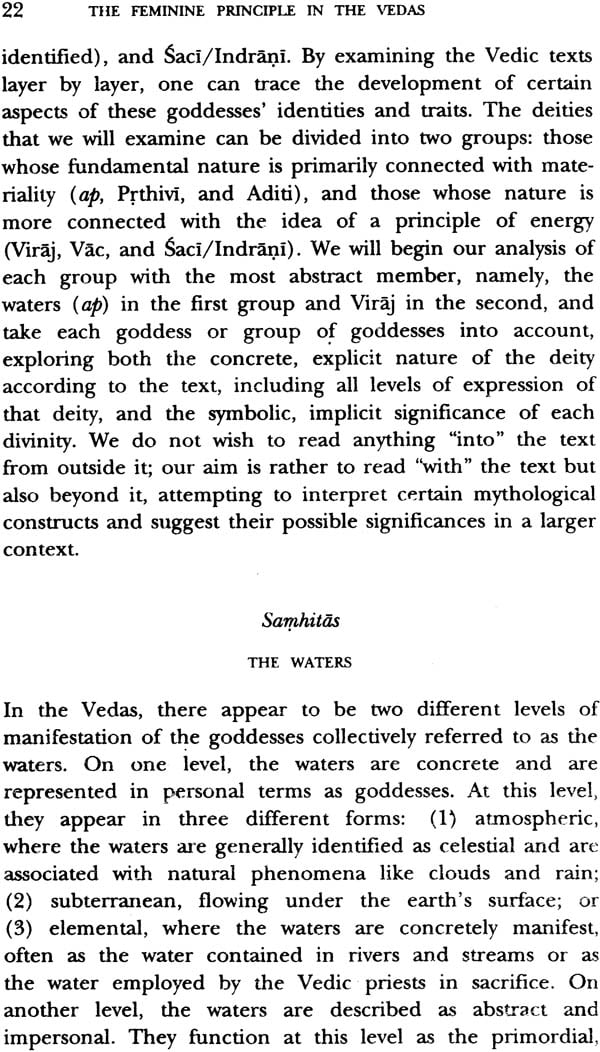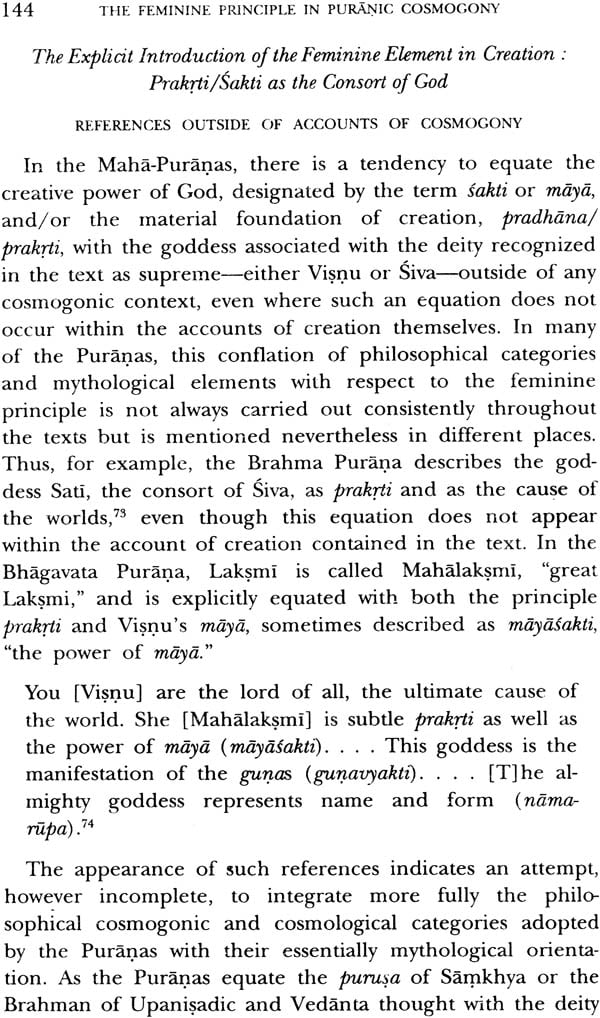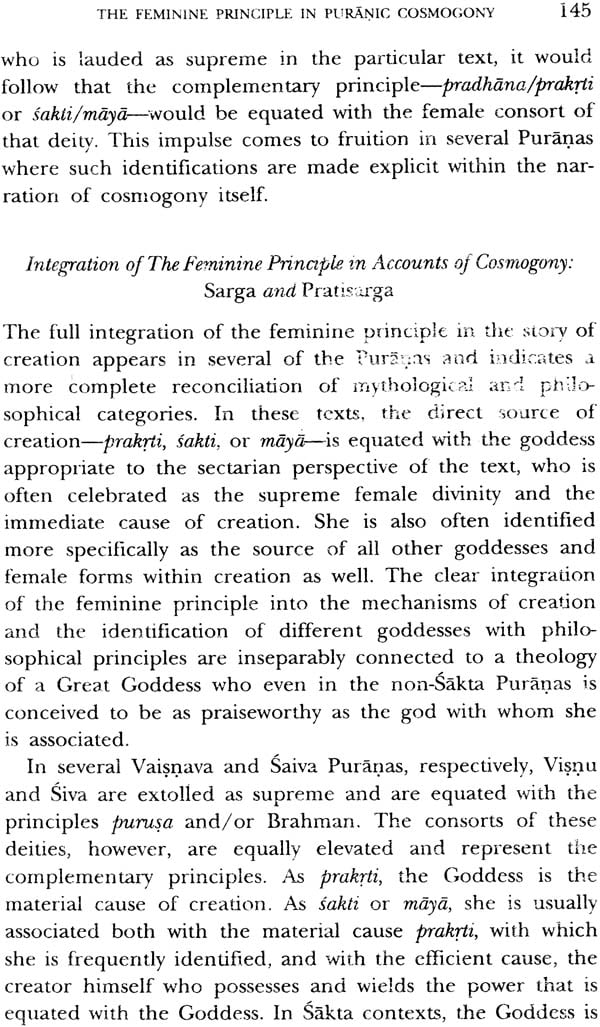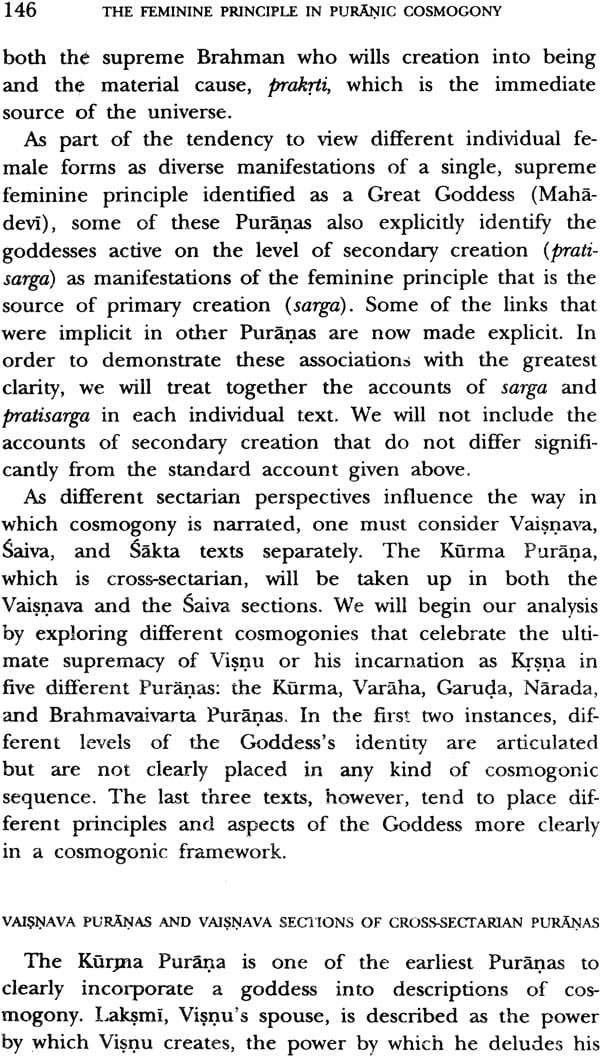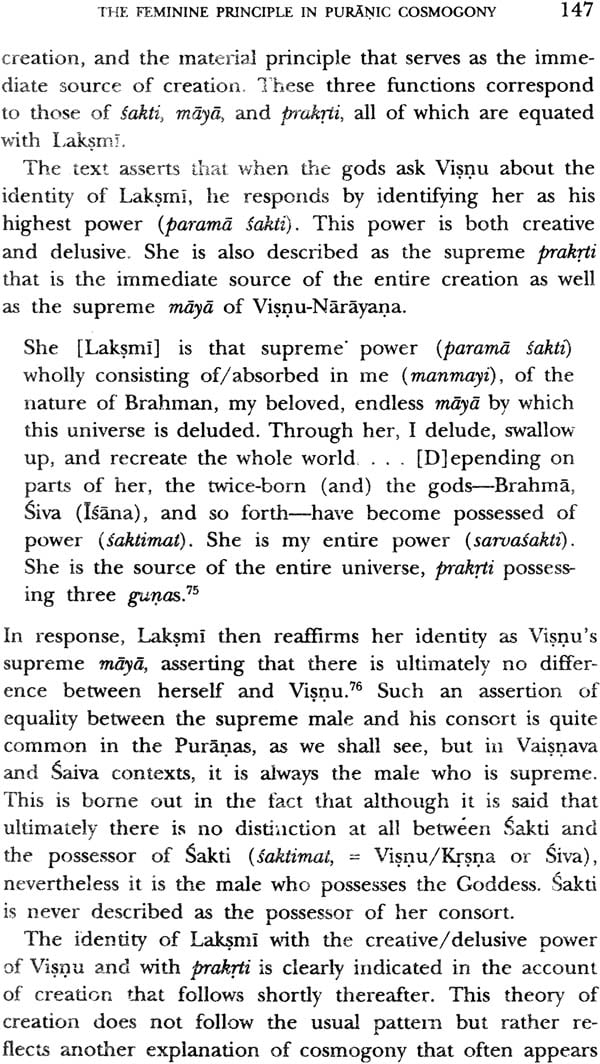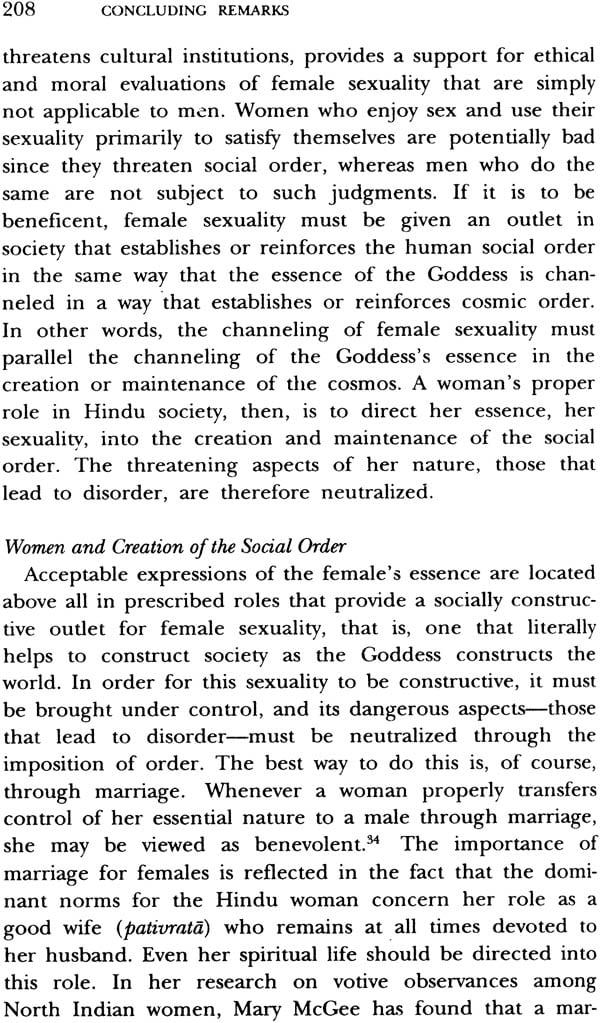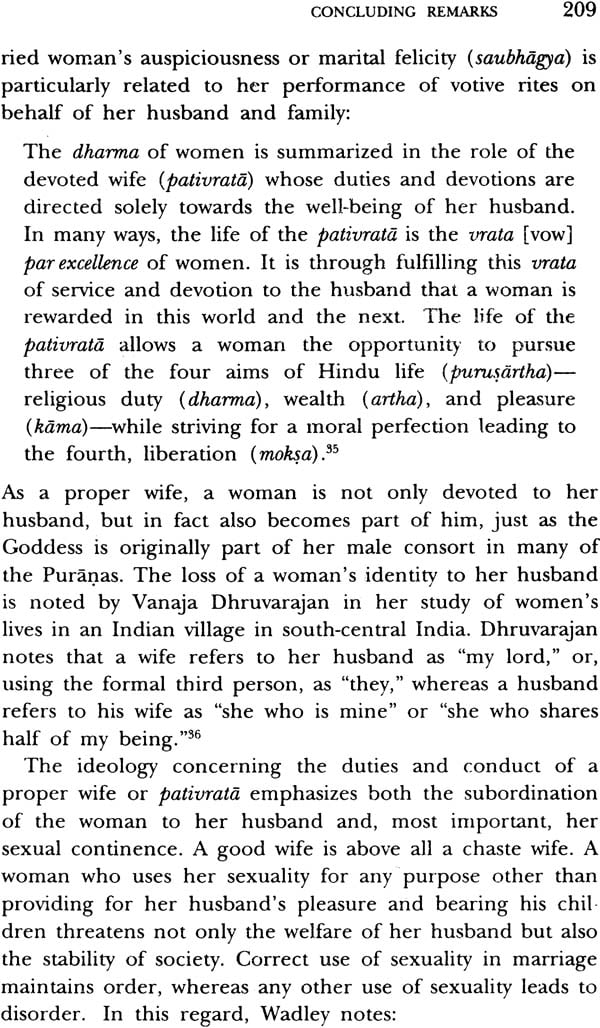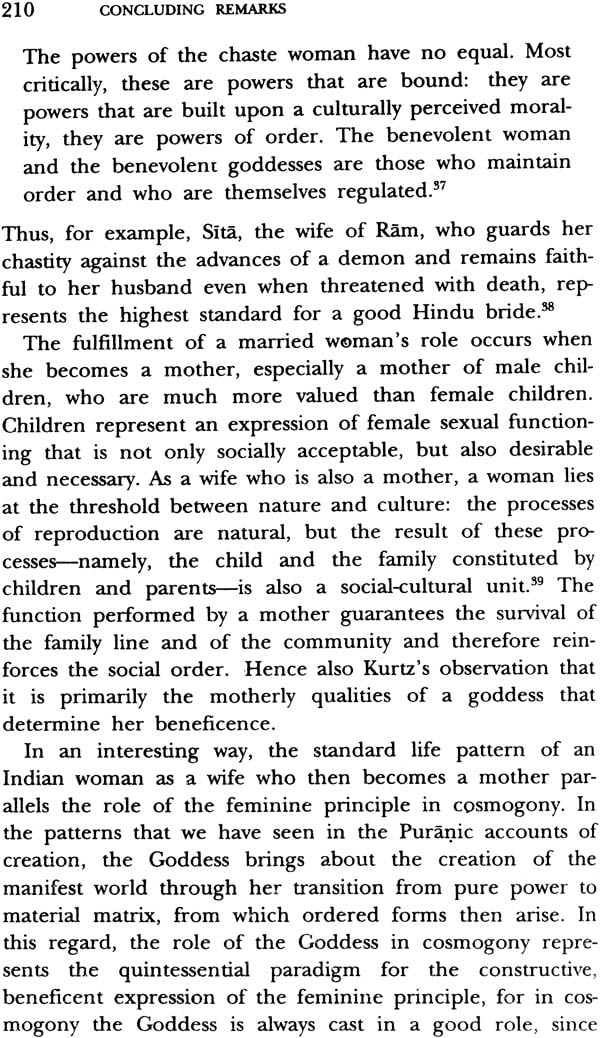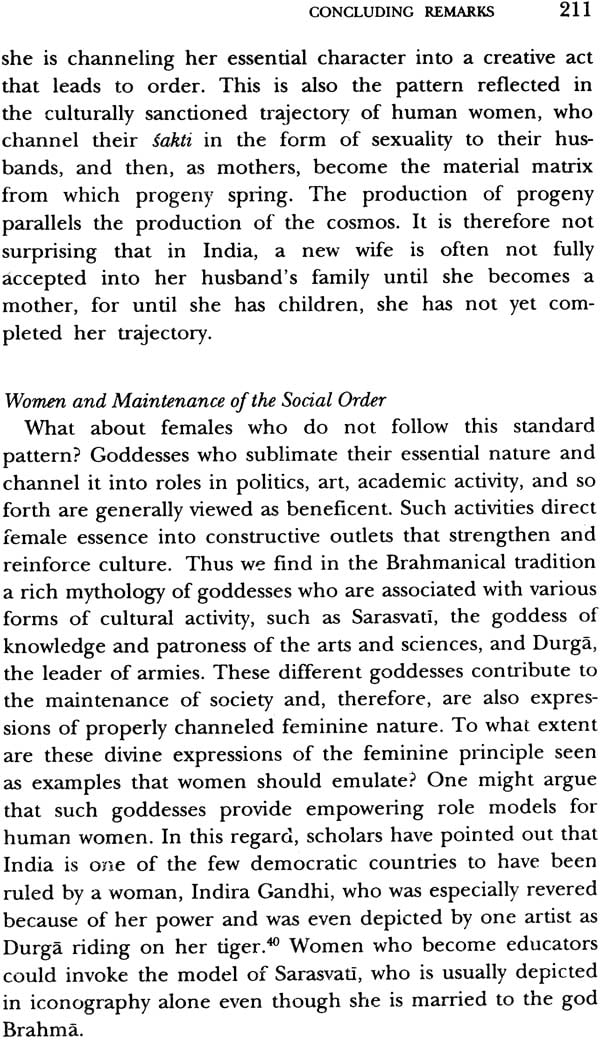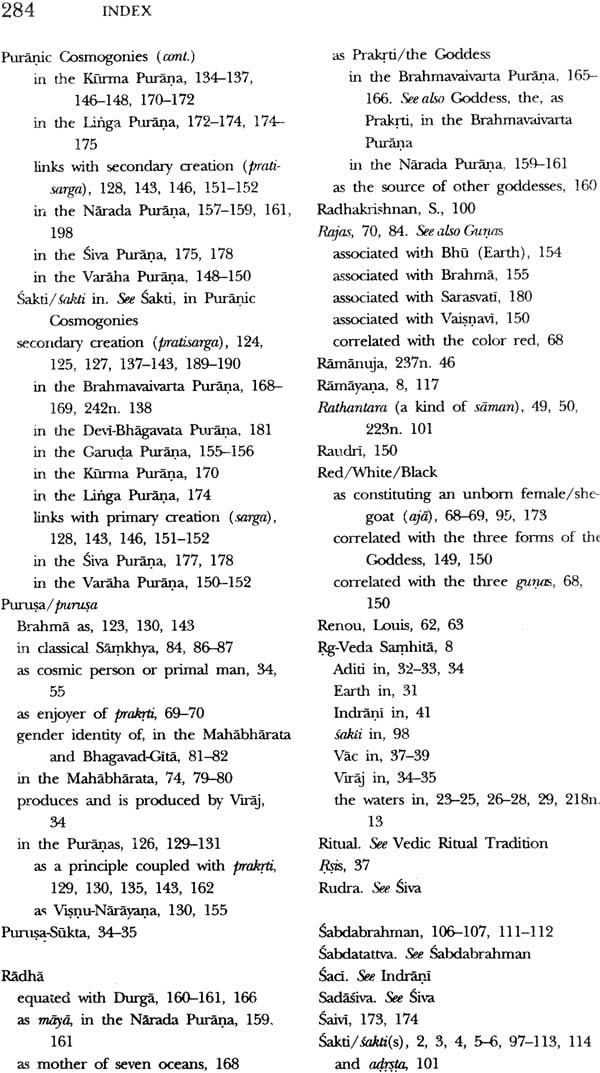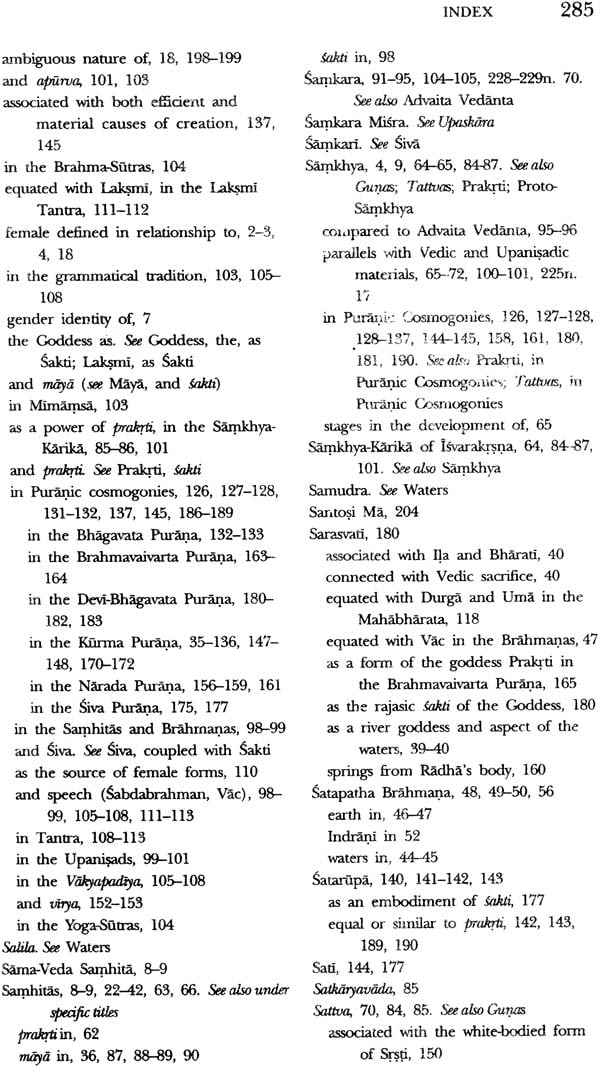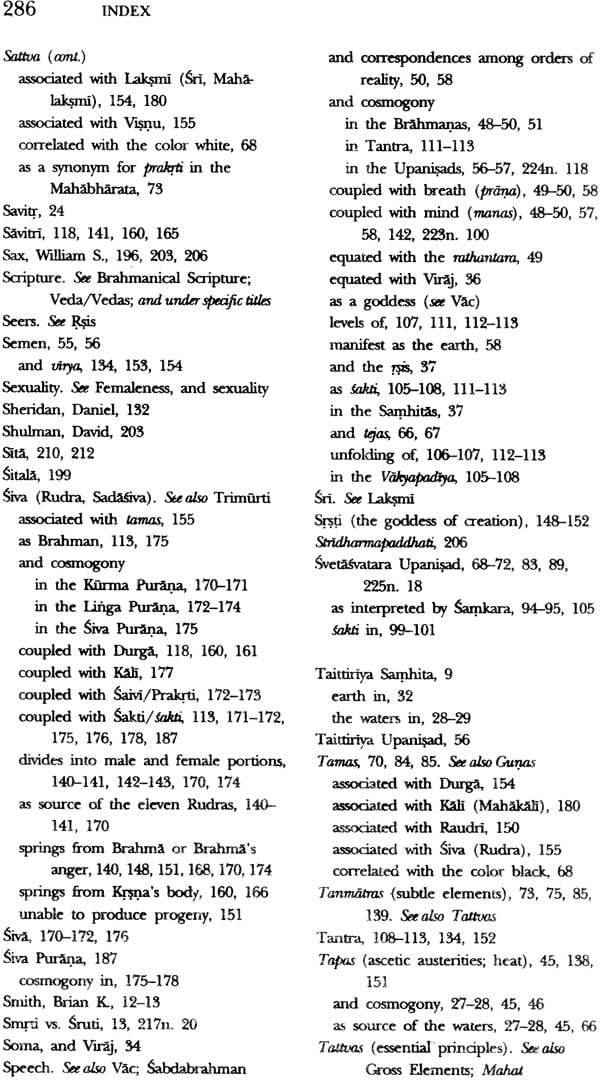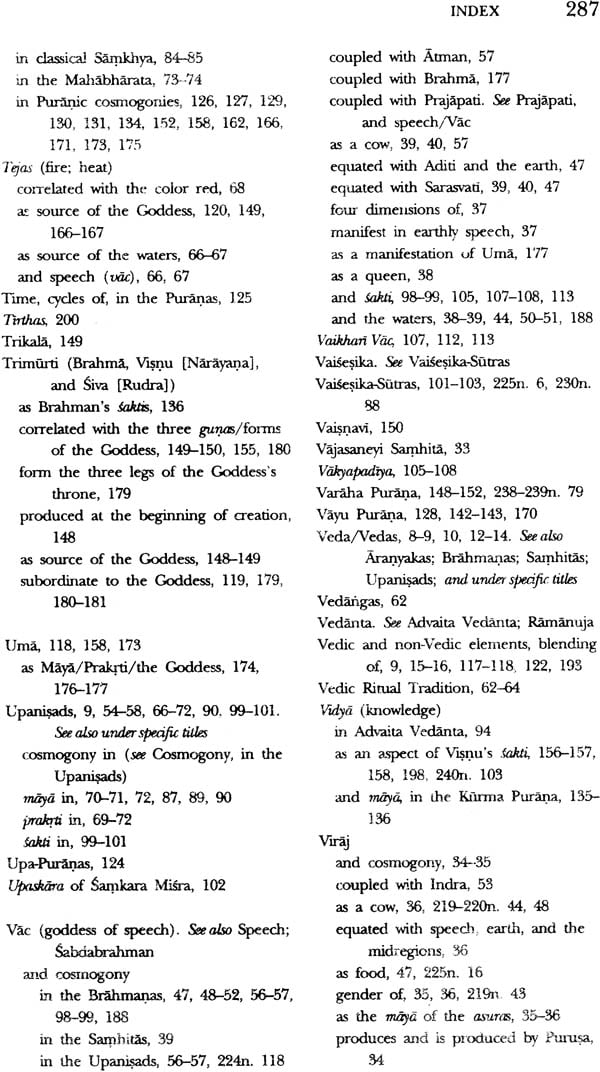
The Rise of the Goddess in the Hindu Tradition
Book Specification
| Item Code: | IDE440 |
| Author: | Tracy Pintchman |
| Publisher: | Sri Satguru Publications |
| Language: | English |
| Edition: | 1997 |
| ISBN: | 8170305217 |
| Pages: | 300 |
| Cover: | Hardcover |
| Other Details | 8.8" X 5.8" |
| Weight | 460 gm |
Book Description
From the Jacket:
This book explores the rise of the Great Goddess by focusing on the development of sakt (creative energy), maya (objective illusion), and prakrti (materiality) from Vedic times to the late Puranic period. clarifying how these principles became central to her theology.
About The Author:
Tracy Pintchman is Assistant Professor in the Department of Theology at Loyola University of Chacago.
Excerpts from Reviews:
I like very much the way in which Pintchman carefully establishes the interrelationship between sakt maya, and prakrti, concept that might not at first appear to be closely connected. This book nicely reveals their organic integration, an integration that Hindu culture itself recognized and elaborated only gradually over the centuries. She avoids reading later Sakta or Tantric theological back in the earlier literature, yet she convincingly demonstrate how the later ideas are firmly rooted in the ancient traditions. Thus the book provides the reader with a sense both of the continuities involved in the development of the Great Goddess concept, as well as the major transformations of tradition that such a development entailed.
-C. Mackenzie Brown
There are two complementary, arresting features of this book. one is the broad sweep of the author's inquiry into the history of three concepts that are fundamental to the Great Goddess. She follows a thread of continuity that has never been so crisply delineated. The result is kind of a conceptual adventure story told in flashbacks we know what the mature conception is, as it is now common knowledge. Where it came from makes for very interesting reading. The Second striking feature is the provocative, suggestive linking of this history to contemporary issues regarding gender and women.
-Thomas B. Coburn
The author provides a through discussion of the main concepts relating to the feminine principle in the intellectual, literary traditions of Hinduism. She shows that goddess worship is not a marginal expression but is central to even the most orthodox elements of Hinduism. She also brings together much far-flung scholarship from India, Europe, and the United States without duplicating any of it.
-Kathleen M. Erndl
<td colspan="3" "=""> Notes 215
| Acknowledgements xi | |||
| Introduction 1 | |||
| Setting the Stage 1 | |||
| Textual Issues 7 | |||
| Summary of the Book 16 | |||
| ONE The Feminine Principle in the Vedas | 19 | ||
| Cosmogony, Cosmology, and Goddess in the Vedas 19 | |||
| Samhita 22 | |||
| The Waters 22 | |||
| Earth 30 | |||
| Aditi 32 | |||
| Viraj 34 | |||
| Vac (and Saraswati) 37 | |||
| Saci/Indrani 41 | |||
| Brahmanas 43 | |||
| The Waters 43 | |||
| Earth/Aditi/Viraj 46 | |||
| Vac/Saraswati 47 | |||
| Indrani 52 | |||
| Upanishads 54 | |||
| The Water 54 | |||
| Earth 56 | |||
| Vac 56 | |||
| TWO Prakrti, Maya, and Sakt: The Feminine Principle in Philosophical Discourse | 61 | ||
| Prakrti 62 | |||
| The Term Prakrti in Early Vedic, Grammatical, and Ritual Context 62 | |||
| Prakrti As a Material Principle 64 | |||
| Prakrti in Vedic and Proto-Samkhya Context 65 | |||
| The Marriage of Vedic and Proto-Samkhya Materials in the Mahabharta 72 | |||
| Prakrti in Classical Samkhya 84 | |||
| Maya 87 | |||
| Maya in Vedic and Early Post-Vedic Contexts 88 | |||
| Maya in Advaita Vedanta 90 | |||
| Sakti 97 | |||
| Vedic Roots 98 | |||
| Sakti in Philosophical Literature 101 | |||
| Sakti in Grammatical Literature 105 | |||
| Sakti in Tantric Literature 108 | |||
| THREE The Feminine Principle in Puranic Cosmogony and Cosmology | 117 | ||
| Introduction to the Goddess Materials in the Epics and Puranas 117 | |||
| The Devi-Mahatmya 119 | |||
| Cosmogony and Goddesses in the Puranas 122 | |||
| Primary Creation (Sarga): Basic Cosmogony 128 | |||
| Samkhya-Type Accounts of Cosmogony 128 | |||
| Reconciliation of Competing Philosophical Systems in Accounts of Primary Creation 131 | |||
| Secondary Creation (Pratisarga) 137 | |||
| Creation on the Worlds 137 | |||
| Creation of Perogeny 139 | |||
| The Explicit Introduction of the Feminine Element in Creation: Prakrti/Sakti at the Consort of God | 144 | ||
| References outside of Accounts of Cosmogony 144 | |||
| Integration of the Feminine Principle in Accounts of Cosmogony: Sarga and Pratisarga 145 | |||
| Vaisnava Purana and Vaisnava Sections of Cross-Sectarian Puranas 146 | |||
| Saiva Purana and Saiva Sections of Cross-Sectarian Puranas 170 | |||
| Sakta Purana 178 | |||
| FOUR | 185 | ||
| Resume 185 | |||
| Contextual Issues 186 | |||
| Thematic Issues 186 | |||
| Historical Issues 190 | |||
| Interpretive Issues 191 | |||
| Further Implications of the Study: Historical and Socio-Political Implications Further Implications of the Study: Cultural Implications | 192 | ||
| The Relationship Between Goddesses and Women 194 | |||
| The Ambiguous Goddess 198 | |||
| Sakti/Maya 198 | |||
| Prakrti/Maya 199 | |||
| The Ambiguous Female: From Divine to Human 201 | |||
| Women and Creation of the Social Order 208 | |||
| Women and Maintenance of the Social Order 211 | |||
| Bibliography 249 | |||
| Index 275 | |||
